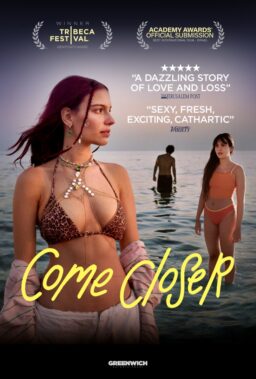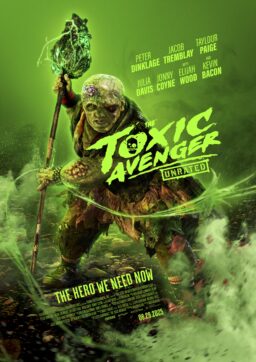A film critic at the New York Times walked out of “Dawn of the Dead” (1979) after the first 15 minutes, complaining of a pet peeve” against zombies.
A film critic at the Dallas Times Herald described the film as “without any doubt the most horrific, brutal, nightmarish descent into Hell ever put on the screen.”
A film critic at the Village Voice thinks it’s one of the most important films of the year.
They all have a point. “Dawn of the Dead,” which opens here Friday, is an ultimate horror film, one that takes traditional images of zombies and ghouls, makes them uncomfortably real, and treats them with a certain poignant humor. And it makes a satiric statement about the American consumer economy; the film is about four non-zombies who barricade themselves inside a suburban shopping center, fight off the ghouls and observe, “We took it, and it’s ours.”
“Dawn Of the Dead” is a sequel of sorts. It was directed by George Romero, whose low-budget, scarifying “Night of the Living Dead” was released nearly 12 years ago and still plays midnights on the cult movie circuit. Romero calls “Dawn” the second film in his Zombie Trilogy. In the third, zombies will control the White House.
Reviewing films like “Dawn of the Dead” presents a special problem for movie critics. The movie is indeed – and admittedly – depraved, violent, brutal, decadent and disgusting, and cheerfully graphic in its scenes of ghouls eating human flesh. I can sympathize with the New York Times critic (Janet Maslin) who walked out after 15 minutes (the opening scenes are of almost unrelieved mayhem). And yet if she had stayed, she would have discovered that the film has more elements than its simple violence, that this film can’t easily be dismissed.
“Dawn” is a carefully crafted work that shouldn’t be confused with run-of-the-mill horror exploitation films. If we can survive the gruesome imagery and see beyond the obligatory scenes of the horror genre, Romero gives us a savagely satiric vision of America that’s not easy to forget. This is both a very difficult film and a very good one.
And Romero himself has matured as a filmmaker since “Night of the Living Dead”; “Dawn” is very assured, is edited with a clear confidence in the effects he wants. That’s not to dismiss the impact of the original. “Night,” in 1968, was a horrifying work that cut through all the camp and low humor of the horror field and was really horrifying. I saw it one Saturday afternoon at a kiddie matinee, found it a terrifyingly effective film, and attacked it in print. I was disturbed not by the images, but by the audience: Such films shouldn’t be shown to small children.
“Night” came out just before the MPAA’s movie rating system was introduced, and was eventually given an R rating (since elevated to a PG). When Romero submitted “Dawn of the Dead” to the MPAA, it offered him an X. The film contains no explicit sexuality and got the X solely for its violence. Romero turned down the rating as misleading, but has advised exhibitors to enforce an adults-only policy.
The film had its first public U.S. screening earlier this month at the U.S.A. Film Festival at Southern Methodist University in Dallas. The festival asked four film critics to invite new American films and discuss them, and “Dawn” was one of my choices. It was also the most controversial film; after one screening, a shouting match developed between audience members who asked, “What kind of sick mind could make a film like this?” and others who called it the best film in the festival.
The challenge, I think, is to see beyond the images to the intentions of the filmmaker. Romero, standing in the lobby and watching several dozen audience members walk out on his film, philosophically observed: “if nobody walked out, it wouldn’t be the movie I wanted to make.” And yet the movie he has made is a great deal more subtle and tricky in its intentions than at first it appears.
To begin with, there is the matter of the zombies. Fans of “Night of the Living Dead” will recall that no explanation was offered for the sudden plague of the Undead-zombies with blank eyes who lurched about the landscape, feasted on human flesh and survived anything unless their brains were destroyed. “Dawn of the Dead” opens as the plague reaches epidemic proportions. The newly dead rise from their graves or deathbeds and march out relentlessly in search of food. The uncontaminated survivors barricade themselves. The questions at hand are basic ones, having to do with the definition of life, the effectiveness of science, the resiliency and occasional cruelty of human nature.
Romero underlines these questions by shooting most of the movie inside a shopping center near Pittsburgh. The survivors take over a J. C. Penney store, and gradually find themselves living quite well there; they go “shopping” and load up on watches, fur coats and caviar. The zombies lurch about outside, to the ghastly accompaniment of Muzak.
Romero uses the shopping center to make subtle points (as in the tenderness of a wedding dinner between two of the survivors) and for broad humor (as when a zombie’s arm is stuck in an automatic blood pressure measuring machine, which measures zero”).
Some audience members at Dallas complained that the film never offers any rational explanation for the sudden plague of zombies. But of course not. No explanation would be rational, and any explanation would undercut the creepiness of the danger. What the film does do is raise sneaky questions in our minds. It’s impossible, for example, to watch the zombies marching through a shopping mall, accompanied by Muzak, and not find a satiric statement on the mildly trance-like state Muzak is supposed to inspire in shoppers. It’s disturbing to see images of horror juxtaposed with the gaudy artifacts of a lawn furniture display.
And it’s difficult to make up our minds about the endless violence inflicted on the zombies. They are shotgunned, run over, hacked to bits, decapitated by helicopter blades . . . and after a while we notice that our reaction to this mayhem is curiously complex. On the one hand, the violence isn’t as disturbing as it would be against “real” human beings: Since the victims are without intelligence or personalities (and, for that matter, are already dead), their fates are less compelling. And yet, at the same time, we feel a sympathy for them: It is not their fault that they’re zombies, and their activities aren’t deliberately anti-social. It’s just in their nature to eat human flesh.
Romero says he noticed some of the same sympathies among the zombies themselves – among, that is, the hundreds of extras he hired.
“We shot every night from 11 p.m. until 7 a.m., when we had to clear out of the shopping center,” he told the audience in Dallas. “We had a regular
assembly-line established to make up the zombies, and there was a lot of competition among our extras about who would get a ‘special wound,’ or get to be killed in a spectacular way, or get to eat human flesh. The shopping mall had one of those machines where you get four photos of yourself for a dollar, and there was always a line outside it; Zombies taking their
pictures.”
Does Romero see a message in “Dawn of the Dead?”
“Well, yes, but it’s not something I think should be talked about a lot. You can say the movie is an
observation about materialism, and so forth, and what have you really said? The point is that people come out of the film having experienced some very extreme emotions, and it’s up to them to interpret what happened.”
One clue to Romero’s approach, though, can be found in the visual style, of “Dawn of the Dead.” His first film. “Night of the Living Dead,” was shot in a very grainy, realistic, rough-edged black-and-white. “Dawn” is shot in slick, color.
“Both times, the look of the movie was a conscious decision.” he says. “At the time we did Night,’ I was a director of television commercials. Some of them cost a lot more than our whole movie. They were very slick, sophisticated . . . we wanted the opposite look for ‘Night.’ We wanted it to look like a newsreel. “With ‘Dawn,’ I wanted the slick took, I wanted to bring out the nature of the shopping center, the retail displays, the mannequins. There are times when maybe you reflect that the mannequins are more attractive but less real – less sympathetic, even – than the zombies. Put those kinds of images side by side, and you raise all sorts of questions.”











